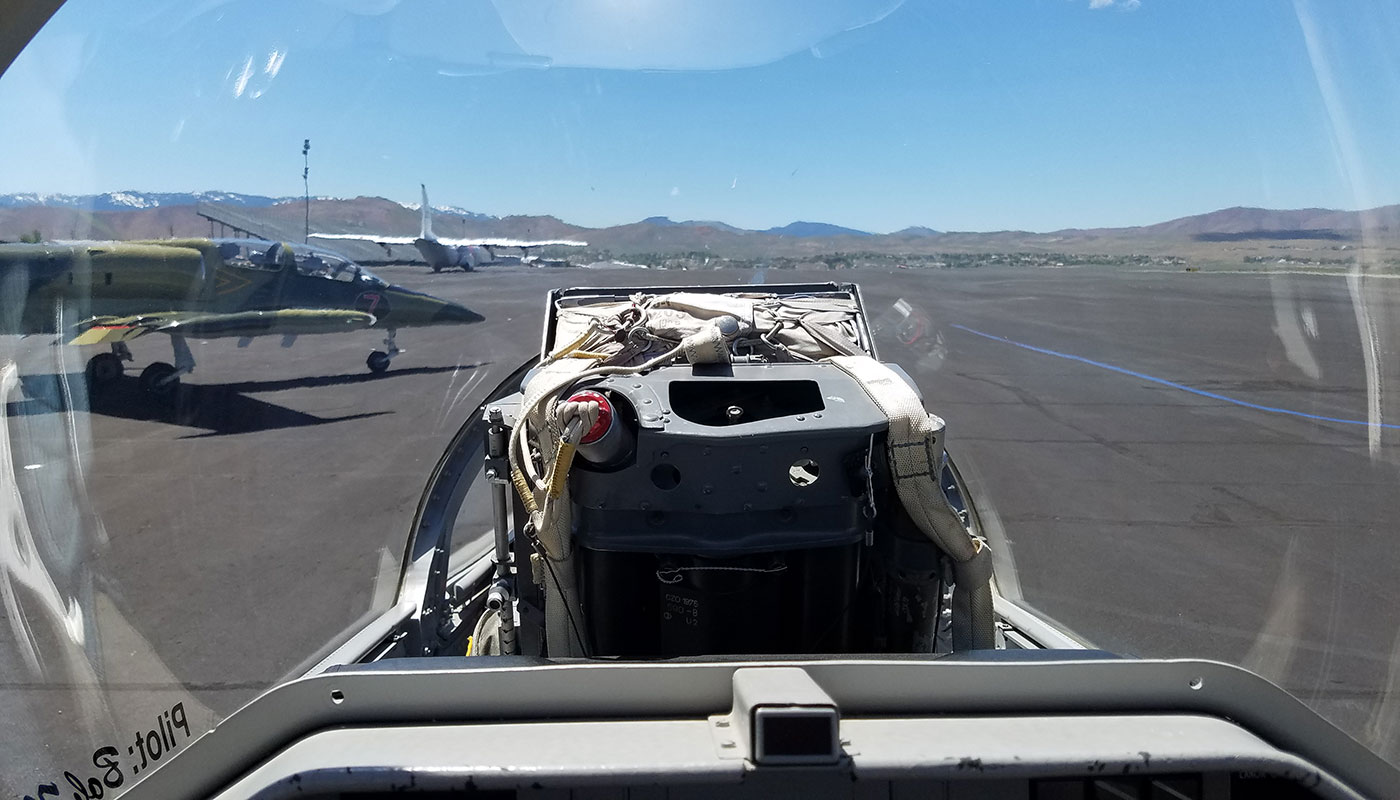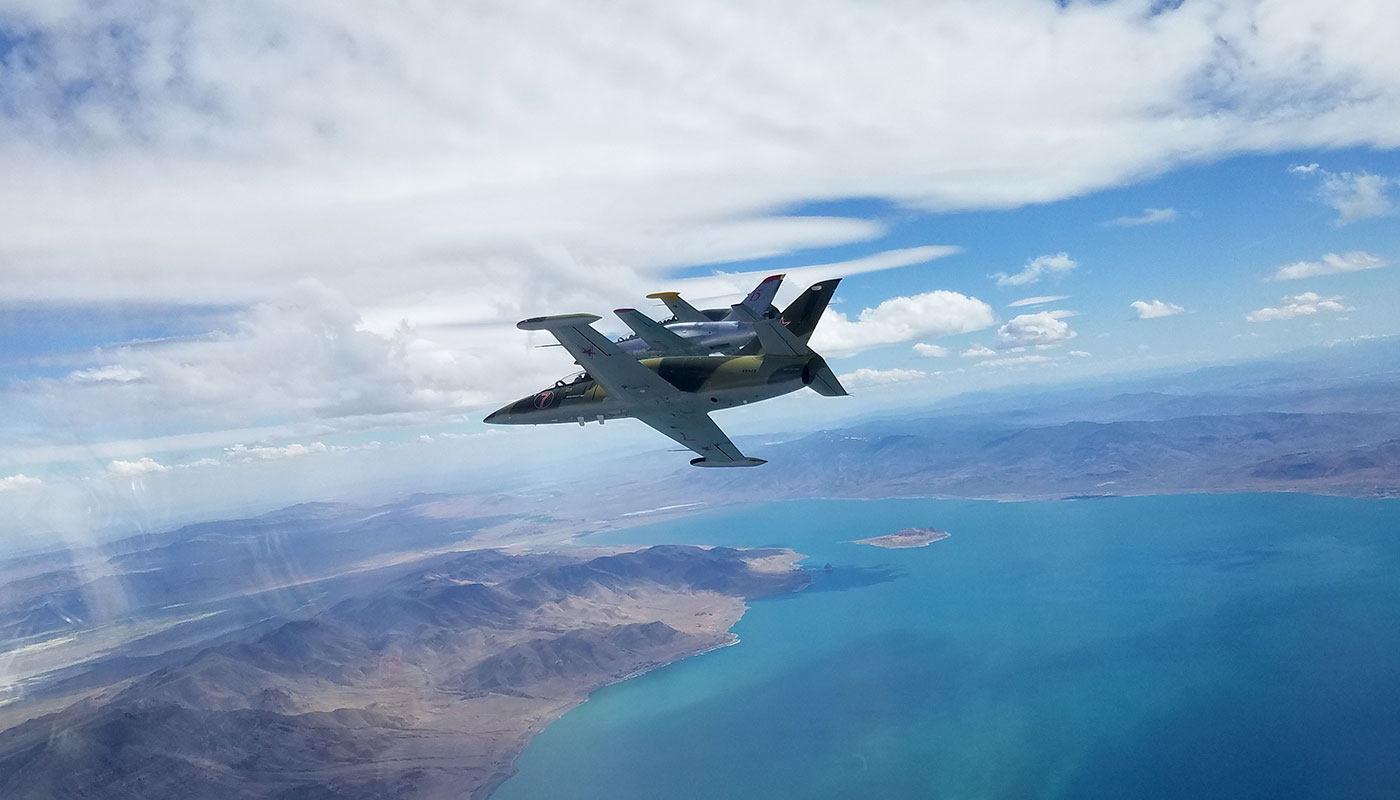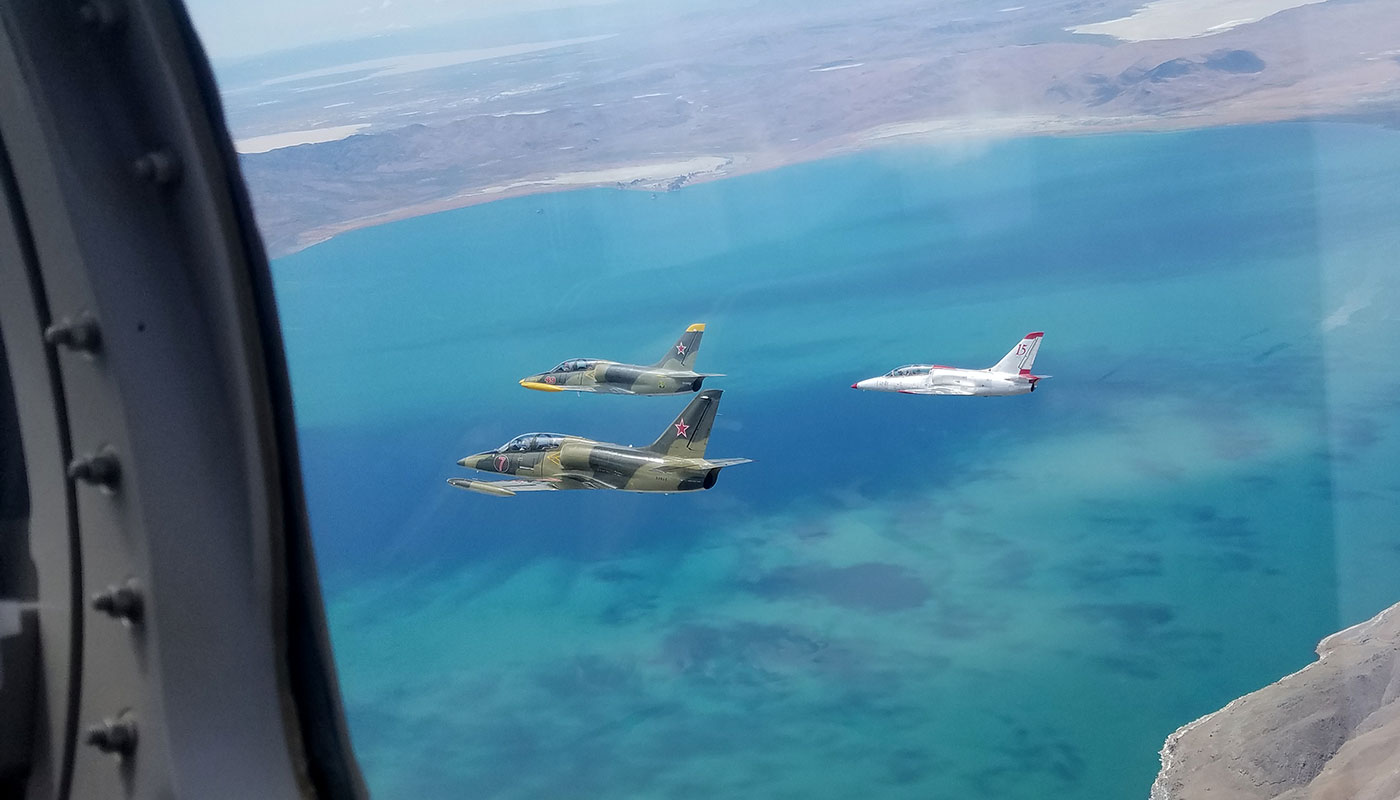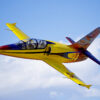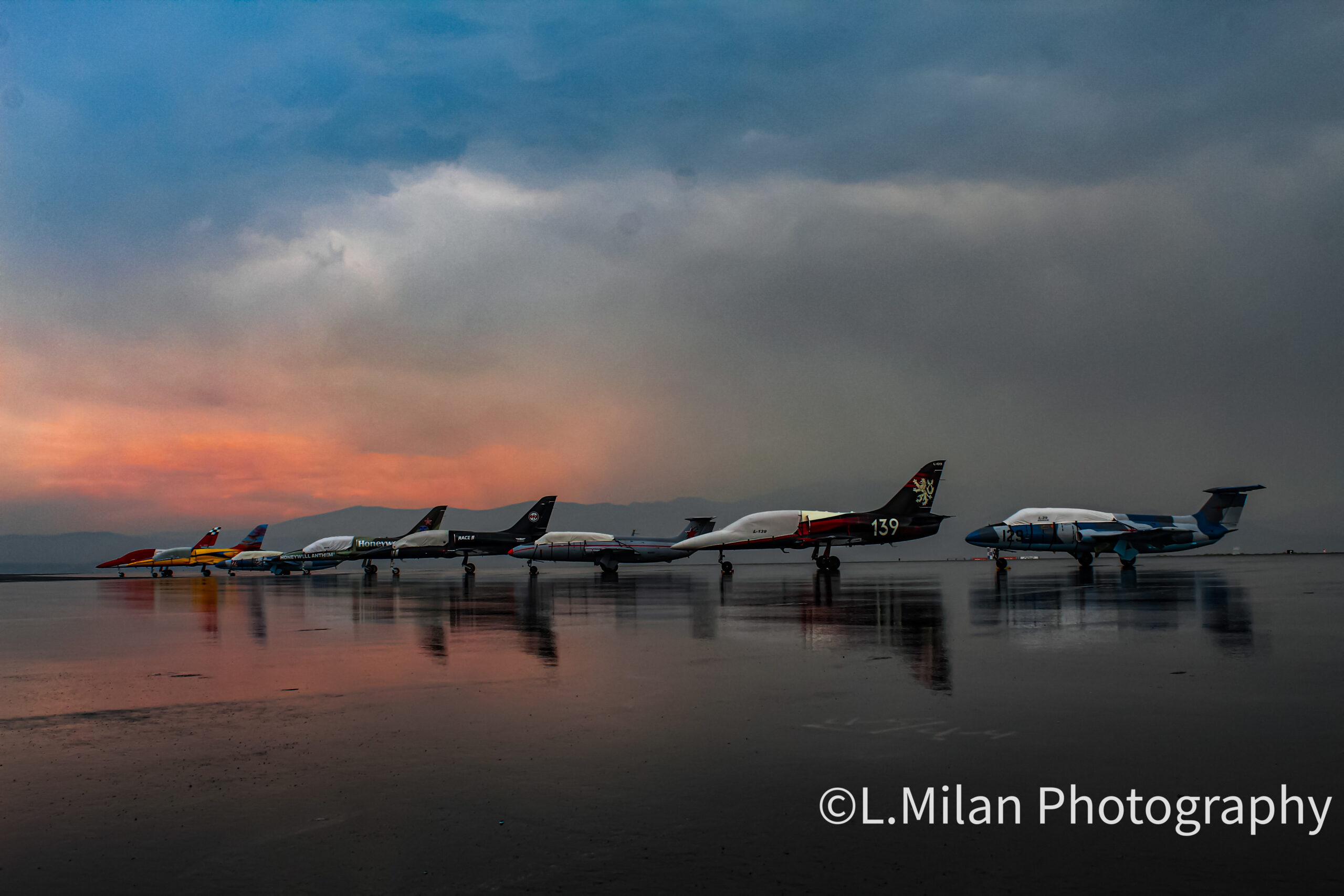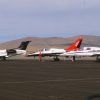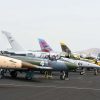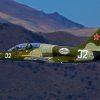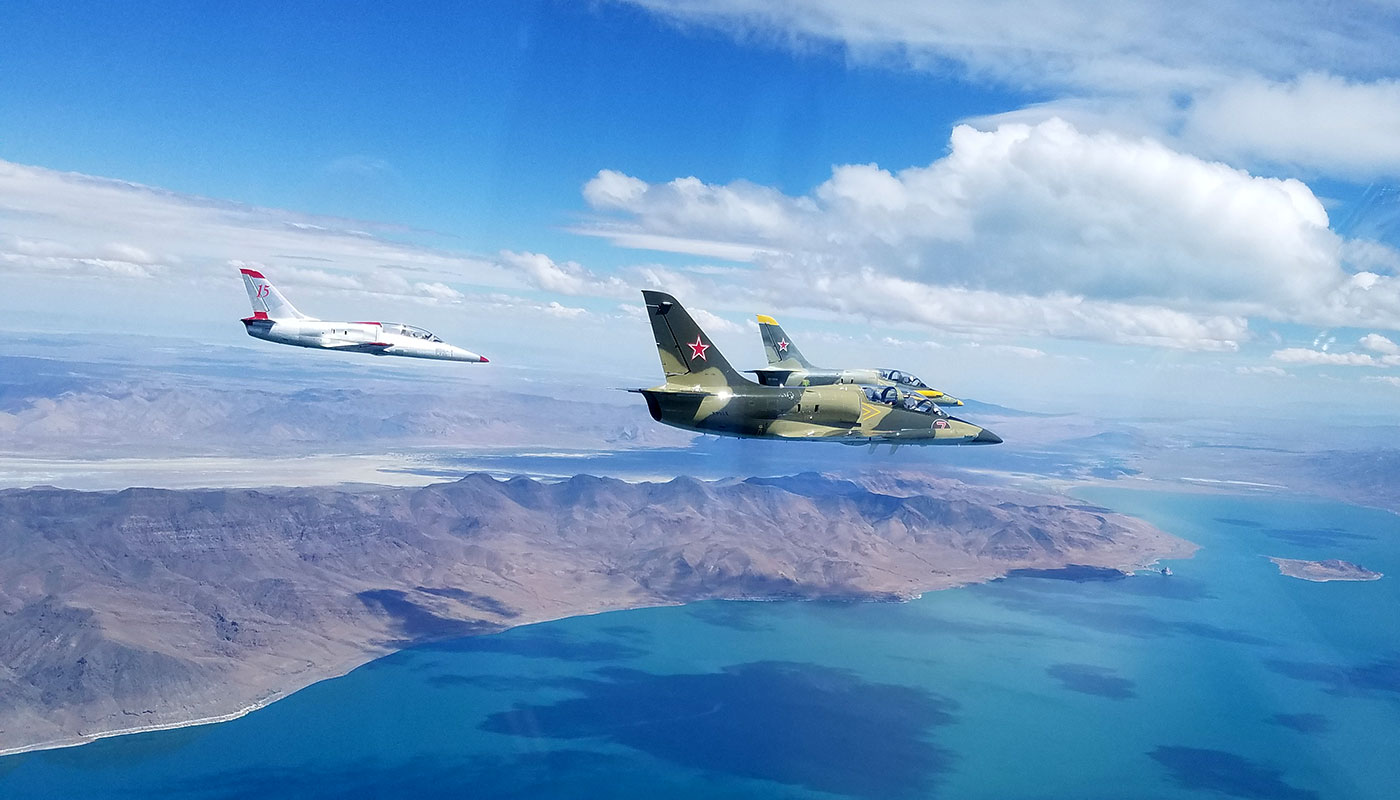
By Nathan Harnagel
In addition to certifying new race pilots, Pylon Racing Seminar (PRS) is an opportunity for returning qualified racers to practice and review racing skills. Several qualified racers participated in 2017. It was my first chance to come back as a qualified racer and I have been asked to write a short summary of some lessons relearned about operating these type aircraft and flying them in formation and on the race course.
The Classic Jets Aircraft Association (CJAA) conducts FAA recognized formation training at various events throughout the year to qualify jet pilots for flying air show formations in waivered airspace. The CJAA procedures are not the same as RJI, but the skill sets are similar. CJAA has conducted this formation training in conjunction with Jet PRS at Reno several times.
I completed Jet Class PRS in 2016 flying an Aero Vodochody L-39. When I raced in Sep 2016 it was in an Aero Vodochody L-29. This is permitted by the Reno Air Race Association and the rules of the Racing Jet Incorporated (RJI) organization. In 2017 I was planning on flying an L-29 at PRS, but there were maintenance issues with the aircraft and I was once again back in the L-39.
Taxiing either the L-29 or the L-39 can be a challenge. The brakes are controlled by a lever on the stick and rudder pedal deflection. The brakes are powerful and over-braking is a common result. The nose wheel only casters with no steering. It is likely that you will need to immediately deflect the nose direction soon after beginning taxiing and before you have much speed built up. If you flex the brake even a tiny bit too much with low forward speed it is possible to bounce to an immediate stop. To get moving again now requires a lot of thrust which will blast everyone and everything in the vicinity earning the ire of crew chiefs and aircraft owners standing nearby. Both formation flights and racing heats taxi out as a group in sequence so this skill set needs to be perfected.
Stock engine L-29s can have difficulty rapidly rejoining with L-39s in the Racing Jet environment. Their lower initial performance can require the use of non-standard geometry and acute cutoff angles to join with the rest of the formation. My experience in racing the L-29 was that once you had effected the rejoin, actually maintaining position was not as demanding. With this background it might be reasonable to assume that flying the L-39 in a flight of L-39s should be relatively easy. It is not necessarily so.
The L-39 is a trainer and not exceptionally overpowered. The AI-25TL engine has lots of protection built into it and if you retard the power too far the spool up time from idle to full power can be as long as 13 seconds. One key is to not go to idle power. The engine also has air bypass valves that automatically open at certain power percentages that are often in the range you want to use for formation maneuvering. When these valves open and close there are 2-4% fluctuations in power output. Clearly this is undesirable in close formation flying. Speed brake use in formation is the subject of different opinions. Some consider it a crutch for those who cannot properly anticipate power changes. Others say the speed brakes are just another control surface like ailerons and elevators, so why not use them. My experience was that the earlier generation L-29 turbojet engine made it actually easier to fly in close formation than the L-39 fanjet.
The L-39 has no hydraulics on the controls. Control forces go up on the ailerons at high indicated airspeeds. The elevator has a bungee system to help lighten required stick forces at high G loadings. In normal cruising flight the elevator is light with near zero breakout forces and is highly effective. It is very apparent when a wingman has not practiced in the L-39 recently since they tend to bob up and down before settling into the proper fingertip position. As the G loads build up during racing, the bungee compensation becomes very noticeable. At high racing speeds it is not unusual to friction the throttle at full increase and use both hands on the stick for more precise control.
Forward visibility seems to be great in the L-39 compared to just about anything, but the framing on the windshield and canopy can be right exactly where you want to look during certain phases of flight like close trail formation. The seat can be adjusted up and down with an electric motor. You may find out you have the wrong seat position as you slide into position a few feet behind and below another jet and can’t see them. When you get down on the race course the same canopy bow can be right in the direction you are trying to look to find the next pylon.
The trailing link design gear on the L-39 has is designed to smooth out high vertical rate touchdowns. It does this very well. At Reno I flew in stronger crosswinds than I had ever flown the L-39 before. The tall, narrow gear gives you the feeling you are landing a high speed bar stool in a crosswind. You must use aileron into the wind or the aircraft will waddle, bounce, and skip sideways on the runway. And don’t forget to push forward on the stick after you are down to compress the nose strut. If you make a lovely touchdown and just hold the stick back you’ll have no brakes due to a squat switch in the nose wheel strut.
Fuel consumption planning is important in air racing. This might seem a paradox since a full jet race might take less than seven minutes. The reason is that carrying extra fuel slows the jet down and so you’d like to only take what you need with a prudent reserve. How much reserve is prudent? Part of the waiver during the races is to the FAR regarding fuel reserves in order to allow the race pilots to choose less than 30 minutes reserve. You must factor in the increased consumption during the race at full throttle. A reserve sufficient to fly the race and divert to another airport if the Stead field runways are closed is required. There can also be unexpected delays after engine start like an accident on the runway from a race ahead of yours in the schedule. Jet engines burn a lot of fuel at idle and it is possible that if the departure delay is sufficiently long, a pilot might have to taxi back and not takeoff for the race at all.
Flying formation and racing jet aircraft requires knowledge, skill, and practice. The CJAA formation clinic at Reno and Jet Class PRS will provide you opportunities to fly with skilled instructors and experienced wingmen. You can fly over a dozen sorties in a little over a week. It can be intense and eventually exhausting. It will make you a more skilled and precise pilot in all phases of flying jets.

